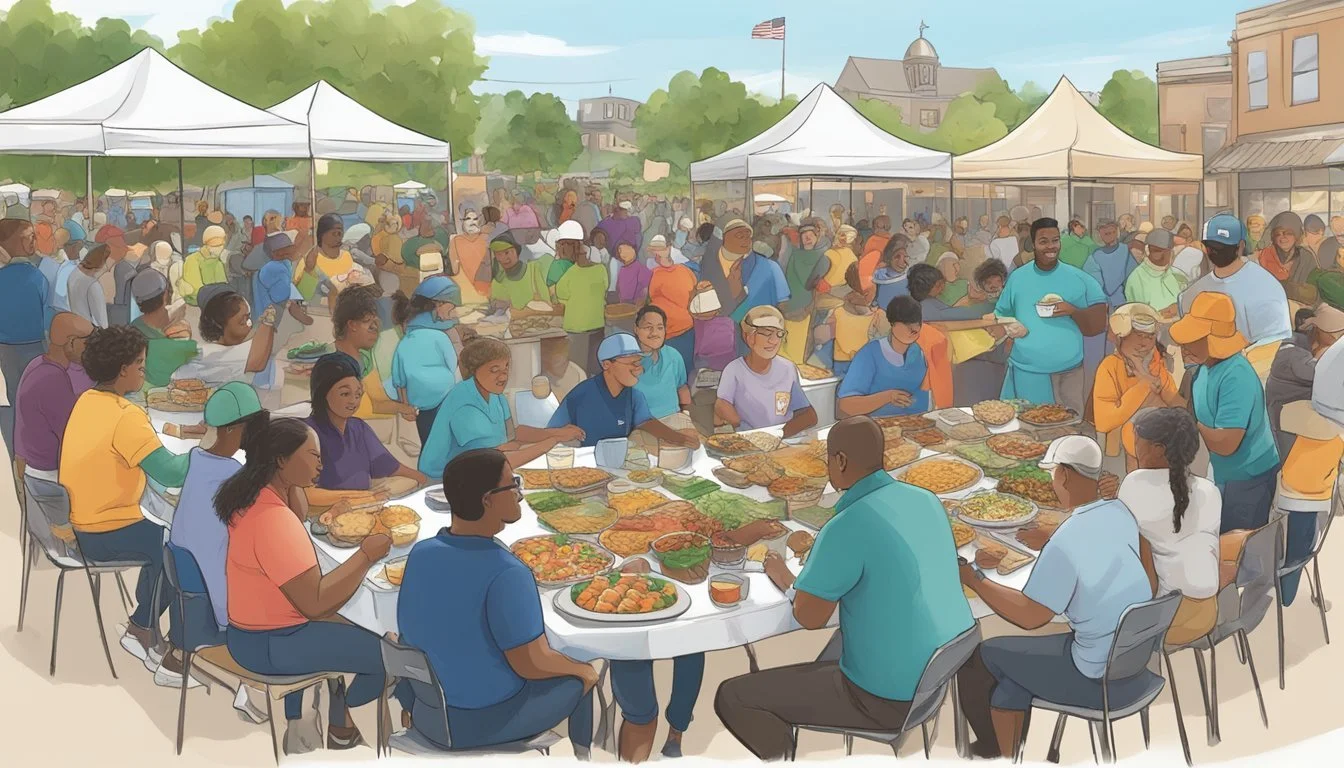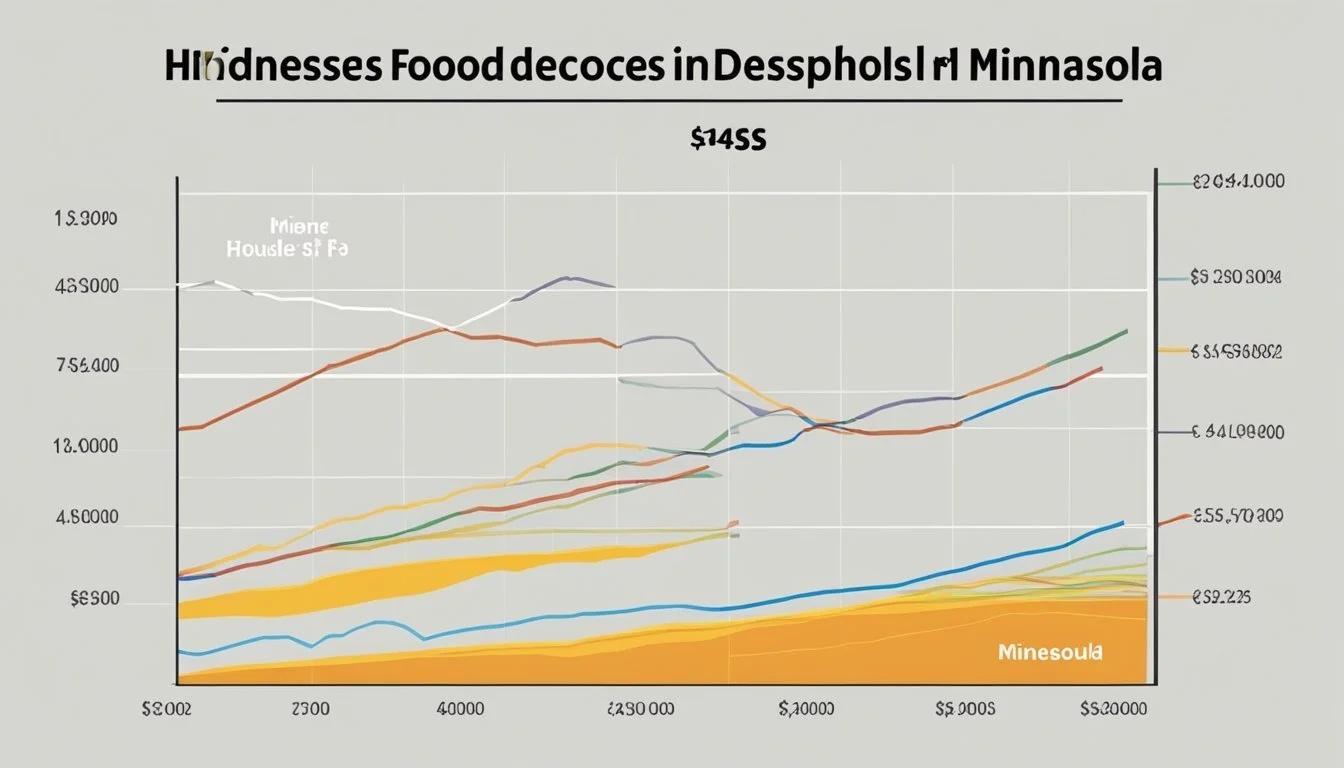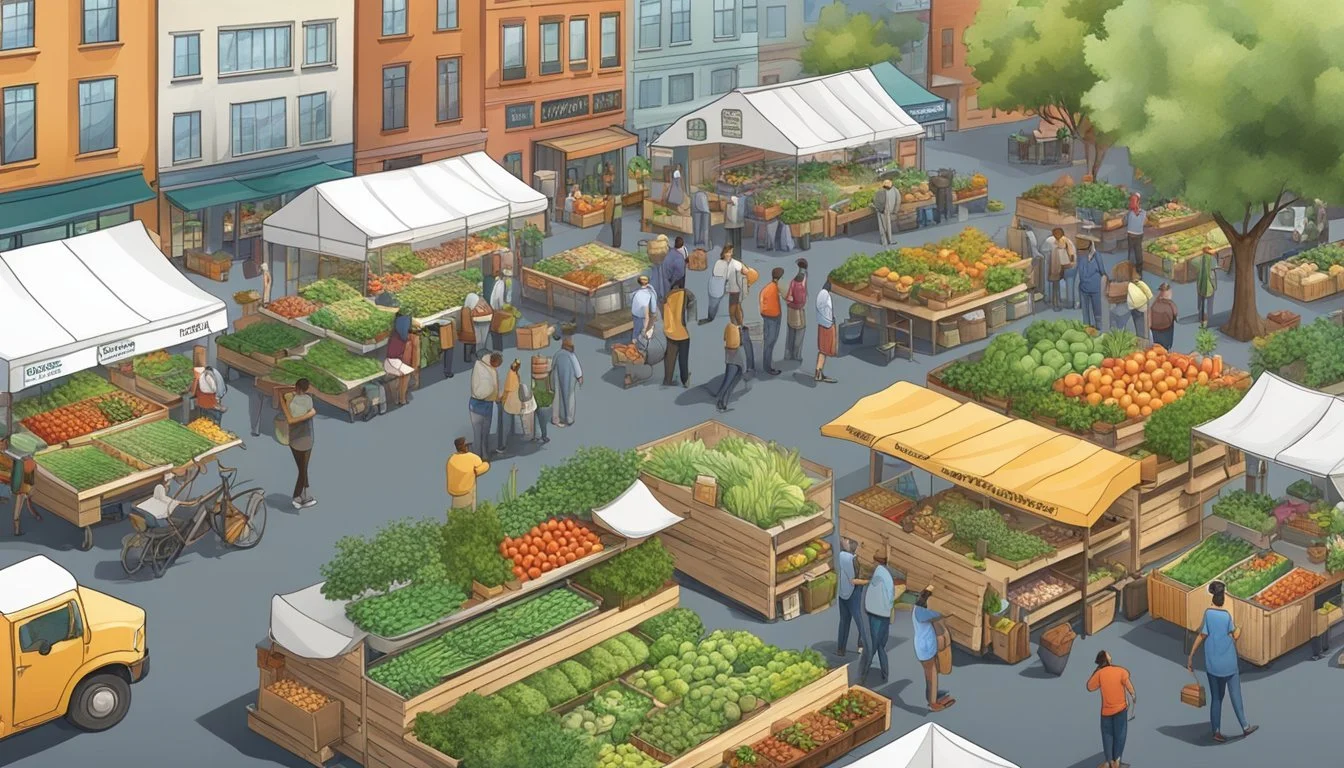Minnesota Food Challenges
Conquer the North Star State's Culinary Giants
Minnesota's dining scene offers a unique array of culinary experiences, but for those with a competitive edge and a hearty appetite, the state's food challenges stand out as a thrilling indulgence. From colossal burgers to fiery hot dishes, these gastronomic feats provide both local foodies and visitors an opportunity to test their limits. Across the "Land of 10,000 Lakes," a variety of local restaurants boast challenges that test both speed and capacity, inviting the brave to step up to the plate—literally.
Food challenges in Minnesota often reflect the region's cultural and culinary diversity. Participants may find themselves facing off against mammoth sandwiches layered with meats and cheeses, or taking on spicy concoctions that demand both fortitude and a love for heat. These challenges aren't just about earning a place on a wall of fame or a complimentary meal—they're community events that bring people together for moments of excitement and camaraderie. Engaging in these endeavors provides guests not only a sizable meal but also a story to tell and a memory to share.
The landscape of food challenges is ever-changing, with new contests emerging and existing ones gaining notoriety thanks to social media and television shows dedicated to the world of competitive eating. Whether it's tackling the "Lucy Challenge" at Tin Cup's, which gained fame on the Travel Channel's "Man vs. Food," or enduring the heat at a local festival's chili pepper dare, there's a challenge in Minnesota to suit every adventurous eater. These quests push the boundaries of dining, transforming an ordinary meal into a test of willpower and endurance.
History of Minnesota's Food Challenges
Minnesota's food challenges are a testament to the state's community-centric approach to dining and entertainment. These challenges often involve oversized portions and a time limit, offering a combination of culinary delight and competitive spirit.
Early Roots: Initially, such food challenges were scarce, primarily found in local fairs or one-off events. Over time, they became a staple in Minnesota's dining culture, fostering a sense of camaraderie and local pride.
The 1970s to 1980s: During this period, food challenges gained popularity with community-driven events that allowed local eateries to showcase their unique dishes. It wasn't just about the size of the meal; it was about the experience and local flair.
Key Food Challenges:
Minnesota's Best Eating Challenge Restaurants offers the "80th Street Challenge" consisting of a hefty 2-pound burger and 3 pounds of french fries.
Shooters Saloon and Eatery in St. Cloud tantalizes the brave with the "Dave Burger Challenge", a progressively difficult contest that draws crowds.
Current Trends: Today's challenges continue to be a medium for social engagement and culinary creativity. Social media has played a significant role in amplifying the visibility of these events, drawing participants and spectators alike. Food challenges remain popular attractions, weaving into the fabric of Minnesota's local culture and food scene.
Whether for charity, celebration, or simply to entertain, Minnesota's food challenges continue to be a platform for elevating community engagement. Participants often take on these oversized feasts not just for personal glory, but to share in a collective state tradition that values food, fun, and fellowship.
Iconic Minnesota Food Challenges
Minnesota is well-known for its unique culinary challenges that draw both locals and food enthusiasts from afar. Some are about quantity, others test spice tolerance, but all are anchored in the state’s rich food culture.
Nook's Food Challenges
The Nook in St. Paul is famous for its Juicy Lucy—a burger with cheese melted inside the patty. The challenge here involves consuming a certain number of these cheese-stuffed delights within a set timeframe. Successful challengers often walk away not just full, but sometimes with a coveted T-Shirt as a trophy.
iPho by Saigon Challenges
At iPho by Saigon, the adventurous can attempt to tackle the 'Pho King Challenge'. This involves finishing an enormous bowl of pho, a traditional Vietnamese noodle soup that is a signature dish at Saigon. Not for the faint of heart, this challenge is as much about capacity as it is about enjoying the rich, aromatic favors iPho by Saigon is known for.
Eddie's on Grand Challenges
Heading outside the Twin Cities to Eddie’s on Grand near St. Cloud, diners face a different kind of eating challenge. Here, contenders take on a timed test featuring Eddie's hefty plates. The dishes and the challenge rules may evolve, but the aim remains the same—clear your plate before time runs out.
Pourhouse's Food Challenges
The Pourhouse, with its multiple locations, invites thrill-seekers to best its massive burger and fries challenge. Complete this gargantuan meal within the specified limit and bask in the glory of conquering one of Minnesota's prime food challenges. Alongside the satisfaction of finishing, winners also typically receive a meal on the house or their name on a winners' board.
Difficulty and Rewards
In Minnesota, food challenges test the limits of participants through intense spice levels and colossal portion sizes. Those who overcome these tests often gain not only a sense of personal achievement but also tangible rewards such as free meals or exclusive merchandise.
Spicy Challenges
The Hot Wing Challenge dares spice enthusiasts to face a fiery gauntlet of wings drenched in sauces that climb the Scoville scale. Victory in this blistering battle might reward the brave soul with a coveted T-shirt to proclaim their spicy supremacy.
Quantity Challenges
Among the giants of the quantity challenges stands the Nookie Supreme Burger Challenge, where hefty, multi-layered burgers await those craving glory. Another Herculean task is the Six Pound Porkey's Nightmare Challenge, which pits contenders against a mountainous assembly of meats and sides. Successful challengers are often honored with their meal on the house, leaving their wallets as full as their stomachs.
Impact of the Pandemic on Food Challenges
The onset of the COVID-19 pandemic significantly exacerbated food insecurity challenges in Minnesota. Food shelves experienced a critical strain as they faced a surge in demand coupled with dwindling supplies. According to reports from MPR News, organizations noted a 15-20 percent increase in demand over pre-pandemic levels, severely testing their capacity to serve communities.
The pandemic disrupted the food retail sector, altering conventional distribution and consumption patterns. Healthy food retail bore the brunt of these changes, with disparities in dietary behaviors becoming more pronounced. The accessibility to healthy food options diminished as the food environment's infrastructure strained under new pressures.
In response to the escalating crisis, various solutions emerged to confront these food-related challenges. Food banks and shelves adopted innovative strategies to meet the heightened demand. Collaborations between food services, non-profits, and the Minnesota food industry have been crucial in devising mechanisms to feed the most vulnerable populations, as featured in National Geographic coverage.
Despite the economy showing signs of recovery and a drop in the unemployment rate, food insecurity remained a persistent problem. Initiatives highlighted by local opinion columns point to a path forward in the fight against food insecurity, emphasizing the importance of sustained effort to address the systemic issues that the pandemic brought to the forefront.
Community Involvement and Charitable Aspects
Community involvement and charitable organizations play a crucial role in addressing food insecurity within Minnesota. They offer tangible solutions to hunger and work towards promoting food security among vulnerable groups, including families and children.
Hunger Solutions Initiatives
Hunger Solutions in Minnesota coordinates efforts to alleviate hunger by supporting food shelves and larger-scale hunger relief organizations. One notable entity in this network is Second Harvest Heartland, which operates as a pivotal resource for local food shelves and hunger relief programs. Their initiatives prioritize the accessibility of nutritious food for families, effectively engaging communities in a united front against food challenges.
Food shelf support: These local community-led food shelves are essential touchpoints for providing immediate assistance to those facing hunger.
Community engagement: Volunteer programs and food drives encourage widespread participation in mitigating hunger.
Promoting Food Security
The drive to promote food security in Minnesota hinges on both policy-centered approaches and hands-on community action. Second Harvest Heartland spearheads campaigns that transcend mere hunger relief by aiming to implement food justice and equity.
Education and advocacy: They educate the public and policymakers on the critical issues surrounding food insecurity and potential solutions.
Innovative partnerships: Collaborations with local farmers, businesses, and educational institutions form a robust support network that bolsters food security efforts.
The hunger relief landscape in Minnesota integrates a multifaceted approach involving direct aid and systemic change to ensure that all Minnesotans have access to healthy food.
Food Challenge Culture in Twin Cities
Food challenges in the Twin Cities offer an array of gargantuan feats, featuring oversized burgers and spicy fare. From the notorious battles portrayed on national television to local eateries presenting their fiercest plates, they beckon the brave and the hungry.
Saint Paul's Famous Contests
Saint Paul has solidified its reputation with challenges like the Lucy Challenge at Tin Cup's. As seen on Travel Channel's Man vs. Food, this contest is not for the faint of heart. Contenders are tasked with conquering two one-pound burgers laced with pepper jack cheese, jalapenos, and fiery diablo sauce, paired with a daunting 2-pound side of fries, all within a 45-minute timeframe. Similarly, The Nook offers an experience infamously challenging, pushing patrons' limits with generously stuffed cheeseburgers, a hallmark of the city's food challenge lore.
Minneapolis's Gastronomic Battles
Minneapolis complements its sister city with its own collection of epic food trials. For example, residents and visitors alike converge on Giant Banh Mi Challenge, where individuals confront a 3.75-pound sandwich loaded with a choice of meats. Completion of this prodigious meal is a respected victory among the local food challenge circuit. Minneapolis's legendary food contests reveal the vibrant and competitive spirit, with various eateries presenting grandiose versions of classic dishes, from towering breakfast platters to heavyweight tacos, for those willing to rise to the challenge.
Economic Factors Influencing Food Challenges
Economic factors significantly impact food security in Minnesota. They must contend with varying demand, fluctuations due to inflation, and the aftermath of the COVID-19 pandemic. The cost of groceries has soared, challenging household budgets.
Amidst economic pressures, policy measures like the Supplemental Nutrition Assistance Program (SNAP) are vital, offering a lifeline to those struggling to afford basic food items. Statewide surplus initiatives help distribute excess food to those in need, but managing the logistics, including the lane distribution, is complex.
The pandemic's disruption has led to a necessary adaptation in food supply chains and policy. There's an increasing reliance on local food systems as regional economic drivers in Southern Minnesota ("Local Food Systems"), which points towards an interconnected relationship between local economic vitality and food security.
Inflation continues to erode the purchasing power of Minnesotans, compounding food insecurity issues. Prices for staples have risen sharply, and many families have had to reallocate their dwindling resources, often at the expense of nutrition.
The success of SNAP and other assistance programs depends on adequate funding and accessibility. These programs face continuous pressure to adapt to changing economic conditions to mitigate food challenges effectively.
Here is a breakdown of key economic factors:
Demand: Variances in food demand affect production and pricing.
Inflation: Reduces real income, impacting food affordability.
COVID-19 Pandemic: Disrupted supply chains and heightened food insecurity.
Groceries: Rising prices strain household budgets.
Policy: Implementation and changes directly influence food assistance programs.
Surplus: Distribution aids in addressing food scarcity.
Lane: Efficiency in food distribution affects access to food.
SNAP: Offers crucial support for food purchases amidst economic uncertainty.
Understanding these factors is essential to formulating responses that ensure all Minnesotans have reliable access to nutritious food.
Strategies for Successful Completion
In Minnesota, addressing food challenges requires a coordinated strategy that engages multiple stakeholders. Among the key strategies is the development of a comprehensive food system roadmap, such as the one proposed by the Minnesota Food Charter, which envisions healthy, affordable, and safe food for all Minnesotans. Successfully implementing these strategies can lead to prosperous communities.
Community Engagement and Education: Community involvement is crucial. Minnesotans must be educated about food systems, the importance of nutrition, and the benefits of supporting local food initiatives.
Cultivate partnerships: Form connections between farmers, businesses, and consumers to strengthen the local food system.
Increase awareness: Deploy educational campaigns to highlight the importance of healthy food choices.
Policy Initiatives and Support: Effective policies can pave the way for greater food security. This involves backing from local authorities and state-level support.
Monitor progress: Create a food system report card, as mentioned in a food systems journal article, to track advancements.
Foster laws and regulations: Support policies that encourage farm-to-table initiatives and improve food distribution channels.
Infrastructure Development:
Enhance distribution: Develop infrastructure that ensures efficient delivery from farm to consumer.
Support farmers: Provide resources for farmers to adopt sustainable practices, thereby increasing the availability of healthy foods.
Community and Economic Development:
Encourage the growth of community meals and urban farming initiatives, as managed by food system organizations like Pillsbury United Communities.
By implementing these strategies, Minnesota can move towards eliminating food challenges, ensuring that everyone has access to nourishing food.
Future of Food Challenges
Minnesota faces a growing food insecurity issue, with an increasing number of residents finding it difficult to obtain nutritious food. This presents significant challenges for community health and well-being, putting a strain on local food systems.
Challenges: The key obstacles include supply chain disruptions, economic pressures, and climate-related impacts on agriculture.
Community: Local initiatives are critical, as food shelves often struggle with high demand and low supply, exemplified by Minnesota's 'summer of hunger'.
Amidst these difficulties, policies play a vital role in addressing the food crisis. Legislative action, such as proposals for increased funding to food shelves, aims to mitigate the growing hunger problem. Moreover, tools like the Minnesota Food Charter suggest strategies for creating prosperous communities with access to healthy food.
To sustainably address these issues, systemic changes are needed. This includes fostering resilient local food systems that can withstand economic and environmental pressures. Investing in agriculture technology and infrastructure can help support the state's food and agriculture sector, which is projected to face sluggish domestic market growth.
In sum, as Minnesota looks to the future, comprehensive and collaborative efforts are vital for ensuring the availability of healthy food and strengthening the resilience of local communities against food challenges.










